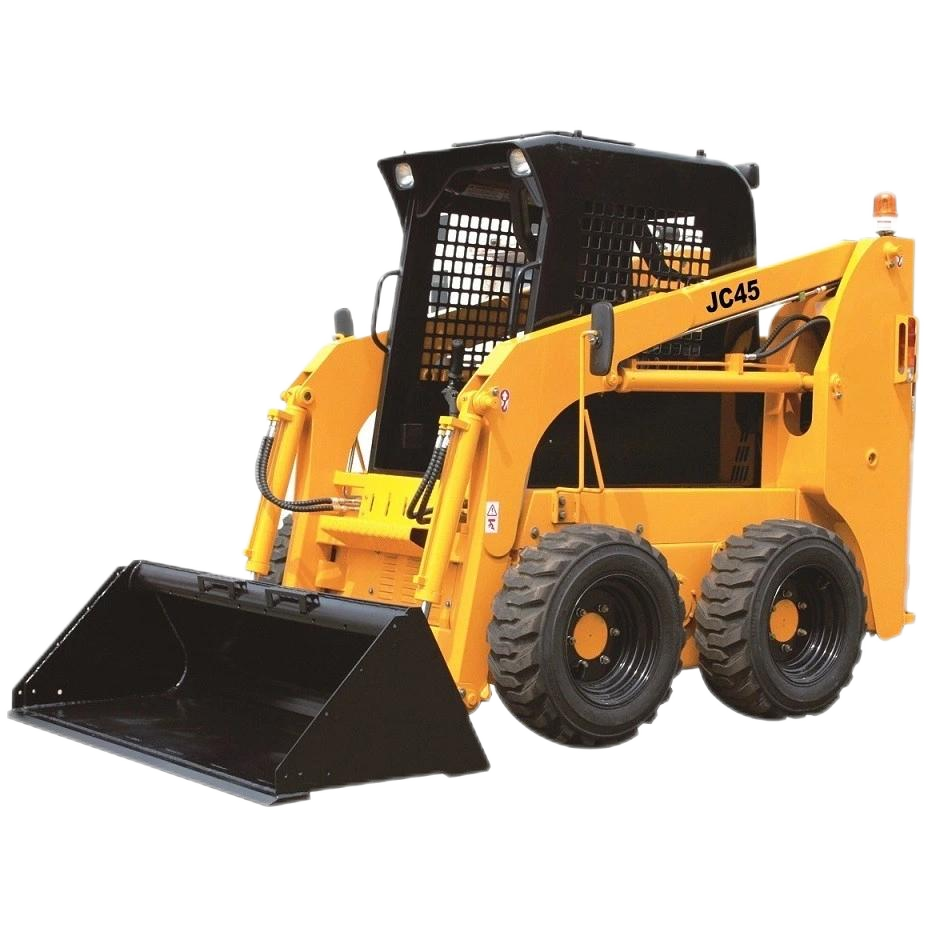Choosing the right skid-steer loader requires comprehensive consideration of various factors such as specific job requirements, working conditions, and equipment performance. Here is a detailed purchasing guide to help you make a more accurate decision:

I. Clarify Core Job Requirements
The versatility of a skid-steer loader depends on its supporting attachments. Therefore, it is first necessary to clarify the main work scenarios to avoid functional waste or insufficiency.
Basic Job Types:
- Earthwork operations (shoveling, leveling, excavating): Attention should be paid to bucket capacity, lifting force, and unloading height.
- Material handling (loading/unloading goods, stacking): Priority should be given to lifting height, load-carrying capacity, and operational flexibility.
- Site cleaning (sweeping, crushing, snow blowing): Corresponding attachments (sweepers, breakers, snow blowers) need to be matched, and it is necessary to confirm whether the equipment's hydraulic flow can support them.
- Special operations (drilling, milling, grabbing): The compatibility of the attachment's installation interface and power requirements must be clarified.
Frequency and Intensity of Operations: For short-term sporadic operations, renting or entry-level models can be considered; for long-term high-intensity operations (such as mines, large construction sites), durable heavy-duty models are required.
II. Focus on Core Performance Parameters
1. Power and Size
- Engine power: Power determines the operating efficiency of the equipment and its ability to drive attachments. For small operations (such as municipal maintenance), 20-50 horsepower can be chosen; for large heavy-duty operations (such as mine transportation), more than 50 horsepower is required.
- Overall weight: Weight affects stability and ground compaction. Lightweight models (1-2 tons) are suitable for indoor or fragile ground; heavy-duty models (over 3 tons) are suitable for outdoor high-intensity operations.
- Dimension specifications: Focus on width and height to ensure that it can pass through narrow spaces (such as roadways, workshop passages). For example, indoor decoration requires a width of <1.5 meters and a height of <2 meters.
2. Operational Performance
- Lifting capacity: Refers to the maximum load weight, which needs to match the weight of the materials that are often transported (such as the weight of materials when the bucket is full).
- Lifting height: Determines the height of stacking or unloading (for example, when loading into a truck compartment, it needs to be higher than the compartment baffle).
- Hydraulic system:
- Flow and pressure: Affect the working efficiency of attachments (for example, breakers require high pressure, and sweepers require large flow).
- Whether to support high-pressure auxiliary hydraulics: If heavy-duty attachments (such as hydraulic shears) need to be used, a model with a high-pressure hydraulic system should be selected.
3. Operation and Comfort
- Control method: Mechanical control (low cost, suitable for simple operations) or hydraulic pilot control (more flexible, suitable for precise operations).
- Cab configuration: Sealed cab (dust and rain proof), air conditioning, suspension seat, etc. For long-term operations, comfort should be given priority to reduce fatigue.
- Visibility: Good visibility can improve safety, especially when working in narrow environments or complex sites.
III. Adaptation to Attachments and Expandability
The core advantage of a skid-steer loader is "one machine for multiple uses", so it is necessary to ensure that the equipment can be compatible with the required attachments:
- Universal interface: Priority should be given to industry-universal quick-change interfaces (such as the international standard Quick Attach) to facilitate the replacement of attachments of different brands.
- List of commonly used attachments: List the necessary attachments according to needs (such as buckets, grapples, breakers, forklift arms, etc.), and confirm whether the equipment's hydraulic pressure and power can support them.
- Future expandability: If you plan to increase the types of operations, it is necessary to reserve power and interface space for attachment installation (such as reserved hydraulic pipeline interfaces).
IV. Consider Working Conditions
- Ground conditions:
- Soft ground (farmland, wetlands): Wide tires or tracked skid-steer loaders should be selected to reduce ground pressure and avoid getting stuck.
- Hard ground (cement ground, mines): Priority should be given to wear-resistant tires to extend service life.
- Environmental factors:
- Dust/humid environments: Cabs with good sealing performance and waterproof hydraulic systems should be selected.
- Explosion-proof requirements (such as gas stations, chemical workshops): Explosion-proof engines and electrical systems should be selected.
Summary: Purchasing Steps
- List core job requirements (type, frequency, materials) and working condition restrictions (space, ground, environment).
- Screen and match parameters such as power, weight, and lifting capacity according to needs.
- Confirm the compatibility and expandability of attachments.





